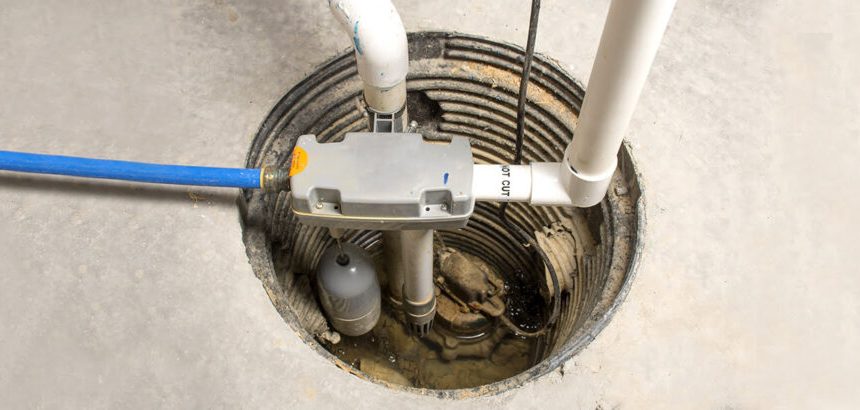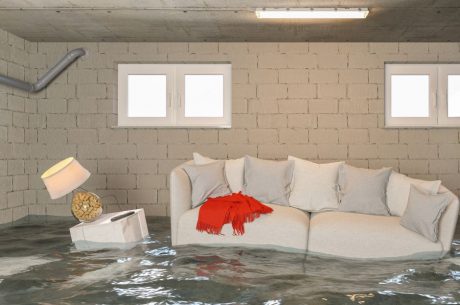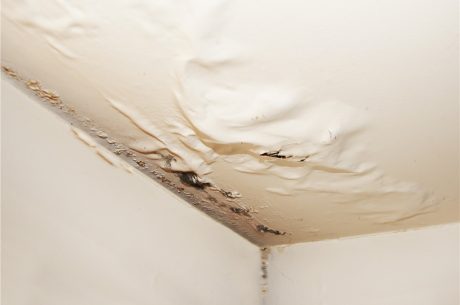Table of Contents
A sump pump flooded basement isn’t just a mess, it’s a signal that something serious has gone wrong in your home’s moisture defense system. Whether it happens during a storm, after a power outage, or because your pump simply failed, water flooding your basement can lead to structural damage, electrical hazards, and dangerous mold growth.
If you’re standing ankle-deep in water wondering what to do, this post is your lifeline. Let’s explore the common causes of sump pump failure, the signs to look out for, and how to stop the flooding before it causes lasting damage.
1. What Causes a Sump Pump Flooded Basement?

Basements flood when sump pumps fail—and there are several reasons why that might happen:
- Power outages: No electricity means no working sump pump.
- Mechanical failure: Pump parts wear down or clog over time.
- Improper installation: A poorly installed pump can’t keep up with water flow.
- Lack of maintenance: A neglected sump pump is a ticking time bomb.
- Frozen or clogged discharge lines: These stop water from exiting your home.
Even if your sump pump has worked perfectly for years, one severe storm could overwhelm it. That’s why regular inspection and servicing are critical.
2. How to Recognize a Sump Pump Flooded Basement
The earlier you detect sump pump failure, the more damage you can prevent. Here are the red flags:
- Water pooling around the pump or on the floor
- Unusual noises like grinding or humming from the pump
- Pump running constantly but not removing water
- Moldy or musty smell in the basement
- Visible mold on walls or furniture
- Discoloration or water stains on drywall
- Tripped circuit breakers or electrical sparks near water
If you see any of these signs, your sump pump flooded basement may already be progressing into a mold hazard. Immediate action is essential.
3. Short-Term Solutions to Stop the Flood
If water is already rising in your basement, here’s what you can do right now:
- Shut off the power to avoid electrical hazards.
- Use a wet/dry vacuum or portable pump to remove standing water.
- Clear the sump pump basin of debris if it’s clogged.
- Check the discharge pipe for blockages or freezing.
- Install a battery backup pump to handle emergencies.
These steps can buy you time, but they’re not long-term fixes. If flooding happens once, it can happen again—unless you get to the root of the problem.
4. Long-Term Fixes to Prevent Another Sump Pump Flooded Basement
To avoid reliving the nightmare of a sump pump flooded basement, you’ll need to make some strategic upgrades:
- Install a secondary backup pump—preferably one that runs on battery or water pressure.
- Test your sump pump monthly by pouring water into the pit and ensuring it activates.
- Inspect the check valve to ensure water isn’t flowing backward.
- Install a sump pump alarm to alert you when the water level gets too high.
- Upgrade to a smart sump pump with remote monitoring features.
Prevention is cheaper and less stressful than cleanup, and it’s the smartest investment a homeowner can make.
5. Mold: The Hidden Threat After Basement Flooding
If your sump pump flooded basement wasn’t professionally dried and disinfected, chances are high that mold is already growing. Mold can develop within 24–48 hours after water exposure and can:
- Damage wood, drywall, and insulation
- Create foul odors and poor air quality
- Aggravate allergies and respiratory issues
- Spread rapidly through your HVAC system
Basement mold isn’t just a cosmetic problem—it’s a health risk and a property value killer. That’s where expert mold removal becomes essential.
6. Why DIY Mold Removal Isn’t Enough
You might be tempted to tackle mold with bleach or vinegar, but these methods only scratch the surface. Mold grows behind walls, under flooring, and in hidden air pockets. If you miss even a small patch, it can return stronger than ever.
Professional mold remediation includes:
- Advanced moisture detection
- Safe mold spore containment
- Air scrubbing and HEPA filtration
- Full removal of contaminated materials
- Restoration of affected areas
When it comes to a sump pump flooded basement, mold removal should always be left to certified experts.
7. Call PuroClean of Ann Arbor: Your Local Mold Removal Pros
At PuroClean of Ann Arbor, we specialize in mold remediation following water-related disasters like sump pump failures. Our team is trained, equipped, and ready 24/7 to:
- Extract water quickly
- Dry and dehumidify your basement
- Remove and prevent mold growth
- Restore your home to its pre-damage condition
Don’t wait for the mold to spread. Don’t risk your family’s health. Call (734) 926-5900 for emergency service or to schedule a free inspection today.
FAQs About Sump Pump Flooded Basements
Q1: How much water can a sump pump handle?
A typical sump pump can handle between 1,800 and 5,000 gallons per hour depending on horsepower, but intense storms can easily overwhelm that capacity.
Q2: How often should I replace my sump pump?
Every 7–10 years is the general rule, but you should inspect and test it annually.
Q3: Will homeowners insurance cover a sump pump flooded basement?
It depends on your policy. Some plans cover water damage if a backup occurs, but not if it’s caused by neglect or maintenance issues.
Q4: Can mold from a flooded basement make you sick?
Yes. Mold spores can cause respiratory problems, especially in children, seniors, and people with compromised immune systems.
Q5: Should I install a water-powered backup pump?
Yes—especially if your area experiences frequent power outages. Water-powered systems operate without electricity and can be a lifesaver during storms.
Stop Floods Before They Start – And Mold Before It Spreads
Basement flooding is one of the most frustrating, expensive, and dangerous problems a homeowner can face. Whether you’re dealing with gallons of water from a sump pump flooded basement or just a persistent damp smell, now’s the time to take action.
PuroClean of Ann Arbor is your trusted partner in turning a flooded disaster into a clean, mold-free recovery. Our expert mold remediation services protect your home’s structure, air quality, and your family’s health.




 PuroClean of Ann Arbor
PuroClean of Ann Arbor